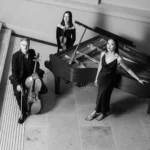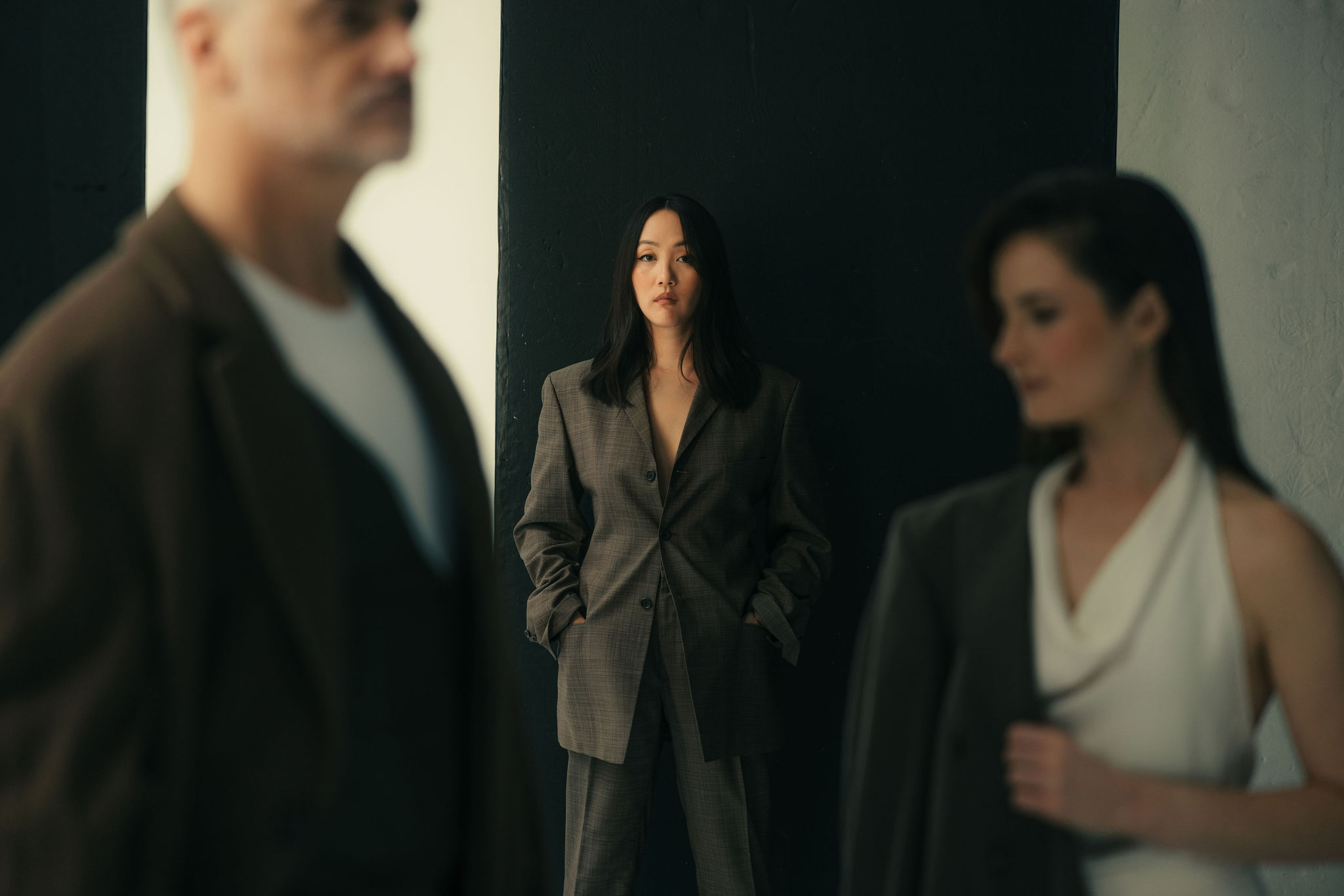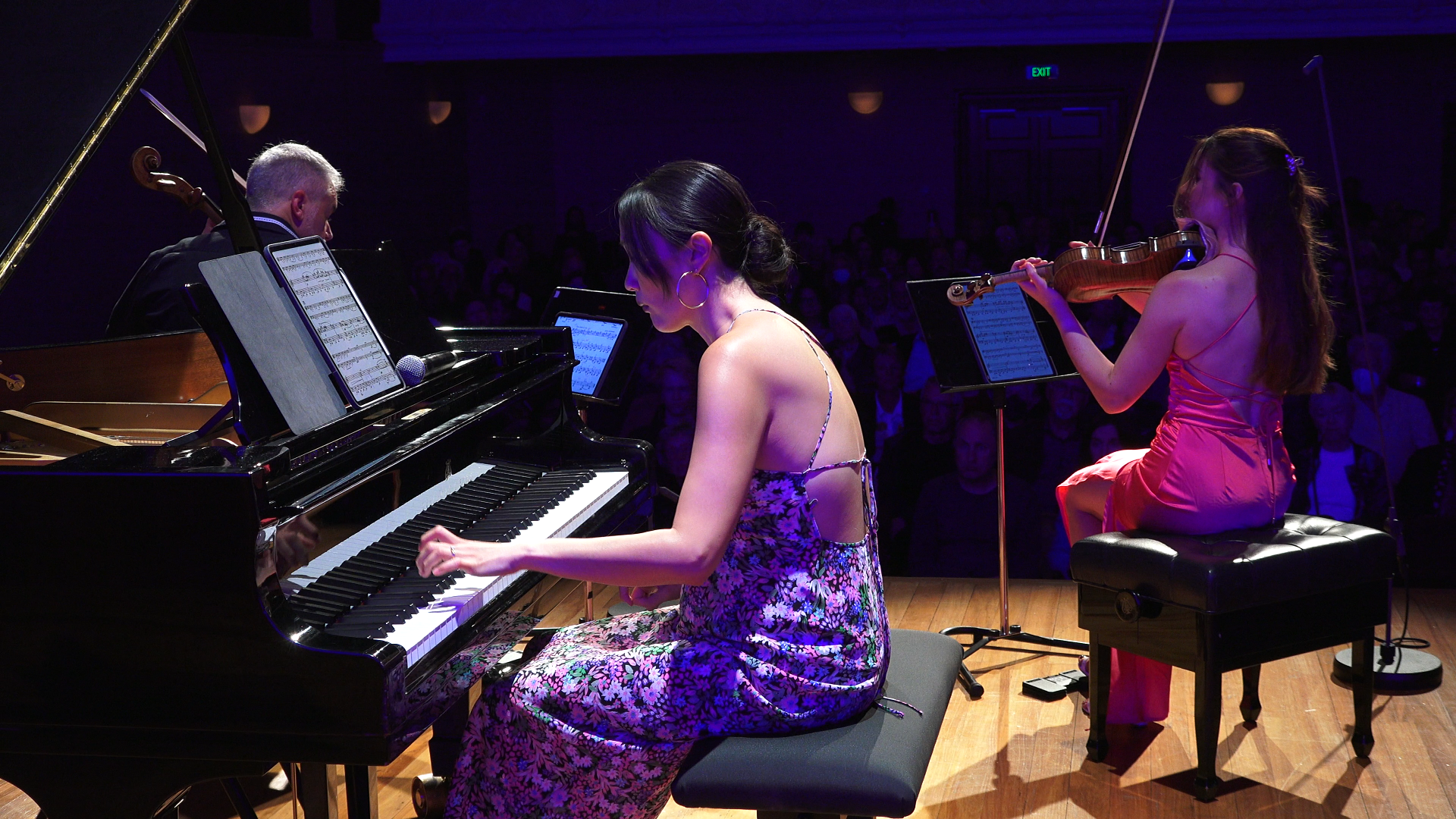Christopher’s Classics – NZTrio: InterFusions at The Piano, Christchurch – 7 October 2020
Reviewed by Tony Ryan
If more evidence were needed to support NZTrio’s biographical catch-cry of being described as a “National Treasure” in the NZ Herald, this final concert in the 2020 Christopher’s Classics series in Christchurch confirmed that claim beyond question. This was simply one of those concerts where the music-making had an honesty, a charisma and a sense of making every detail count towards the essence of each work’s expressive potential.
It’s a long time since I last listened to Beethoven’s early trios, but with Op. 1, No. 3 in C minor, NZTrio reminded us that there is wonderful music in this composer’s other piano trios besides the perennial Archduke and Ghost examples. The three players seemed to have a totally natural rapport that enabled them to find so much variety of expression in this piece that it emerged as a true masterpiece. Expressive phrasing from all three musicians engaged our attention throughout the performance. If pianist Somi Kim allowed herself just a little too much rubato and a degree of indulgent romanticism in her touch in the first movement, the more robustly classical approach from the two string players brought out the full impact of Beethoven’s innovative style.
All three players found the fullest imaginable range of humour, pathos and power as required in each of the four movements, and Kim’s easy and consummate technique came into its own, especially in the variations of the second movement and the prestissimo Finale.
Cellist Ashley Brown then introduced the second work on the programme after talking about celebrating the Beethoven anniversary in all of NZTrio’s 2020 concerts, and the group’s gratitude for being able to get back in front of live audiences after the months of restrictions. We in the audience couldn’t have agreed more.
The following two shorter works in the first half of the evening, along with the opening piece in the second half, were all new, or new to me and, I dare say, to the majority of the audience.
Greek-Canadian composer Christos Hatzis’s Old Photographs comes from a multi-movement work called Constantinople written for varying musical combinations. This piano trio movement proved a total delight. Ashley Brown’s spoken introduction mentioned the influence of South American, Piazzolla-like tangos, and that was certainly a recognisable connection when it occurred. But, after the four opening chords, right from the start, a certain Argentinian influence was evident. Those four opening chords need some comment because, as soon as Somi Kim played the first two, I knew what the next two would be, and I realised that they are identical, albeit in a different key and with different figuration, to the opening chord sequence (distinctive because of its use of a sharpened chord VII) of César Franck’s Prelude, Chorale and Fugue for piano, and I wondered if this was a deliberate reference on Hatzis’s part?
Irrespective of all that, this was hugely appealing music which, like a lot of recent avant-garde-resistant music, almost bordered on a derivative crossover style. However, the writing for the instruments is so inventive and so full of vitality, and when given a performance of such abandoned virtuosity and commitment as we got from NZTrio, it becomes totally convincing, genuinely exciting and absolutely stunning in its effect. Going to YouTube to hear it again the following day, I found that none of the performances quite matched the brilliance, spontaneity and flair of NZTrio. Their sun-drenched languor in the opening section led into a seductive and steamy tango which then morphed into a frenzied, almost delirious wild-dance before exhaustion brought back the indolence of the opening to close this extraordinarily hypnotic piece.
I should also mention that an element of real glamour featured in the clothes worn by the players in this concert. Apart from the welcome move away from the more traditional and usually dreadfully uninspiring concert attire, the more colourful variants that appeared on stage for this concert seemed to genuinely enhance the colour and vitality of the music. Made for the group especially for this tour by New Zealand designer Liz Mitchell, the visual effect was extremely successful. While the two women’s dresses were beautifully effective, it was Ashley Brown’s long striped coat that made the biggest visual splash. For the Beethoven it almost took on a period costume connotation, but for the Hatzis it really came into its own, lending colour and exoticism to those same qualities in the music.
The Hatzis piece was a very hard act to follow for a newly commissioned work by New Zealand composer Salina Fisher. After Old Photographs persuaded us to abandon ourselves to the easy pleasures of music that so readily appeals to our senses, Fisher’s Kintsugi demanded our more determined engagement and intellect. The piece was played with the same commitment and belief in the music as we’d just experienced and, while the sonorities, textures and structural cohesion of the piece were clear and well-crafted, this is music that needs repeated hearings to reveal its full expressive intent. The subtle use of Japanese scalic devices came through in several places and the composer’s ability to balance delicate sonorities against one another from each of the three instruments was impressively evident. I look forward to further opportunities to hear this piece.
After the interval the trio returned to the stage wearing different, but no less effective, examples of Liz Mitchell’s designs and, as expected, began to tune. Seeming to tire of the string players’ fussiness over their tuning, pianist Somi Kim began to riff. Violinist Amalia Hall soon joined in and, eventually, after further tuning over the riff, so did Ashley Brown, and thus Dinuk Wijeratne’s Love Triangle began. Again, I couldn’t resist checking it out on YouTube where I found the Gryphon Trio’s world premiere video of the piece, and I have to say that NZTrio’s way with this unusual opening, as with the whole piece, was notably more effective and convincing. Love Triangle is another work by a Canadian composer; this time Sri Lankan-Canadian. And again, the influence of wider cultural styles plays a significant part. It was another particularly appealing piece, although its longer duration made it less of a sugar-hit than the Hatzis movement. NZTrio made the most of its dynamic and textural variety, and especially its rhythmic elements which they played with a naturalness and ease that belied its complexity.
To end the programme, Ravel’s gorgeous Piano Trio in A minor could not have received a more convincing and idiomatic performance. The work’s exotic and colourful Spanish-Basque-French-Impressionist mix and Ravel’s magician-like mastery of instrumental effects and technical wizardry were all presented to consummate effect by NZTrio. Parts of this work rely on absolute perfection of intonation, ensemble and timbral unity. All of these factors were comprehensively mastered by the players, not to mention their awe-inspiring technical prowess which was always totally at the service of the music.
Although not everything in the 2020 season of Christopher’s Classics went fully to plan in this unusual year, the series still managed six excellent concerts with only one replacement, a couple of reschedules and, of course, two or three with limited numbers and social distancing. Although I missed one of the concerts because of the rescheduling, I have no hesitation in choosing NZTrio’s concert as the year’s highlight of the series. This was music-making of the highest calibre, long to be remembered.
Reviewed by Tony Ryan




